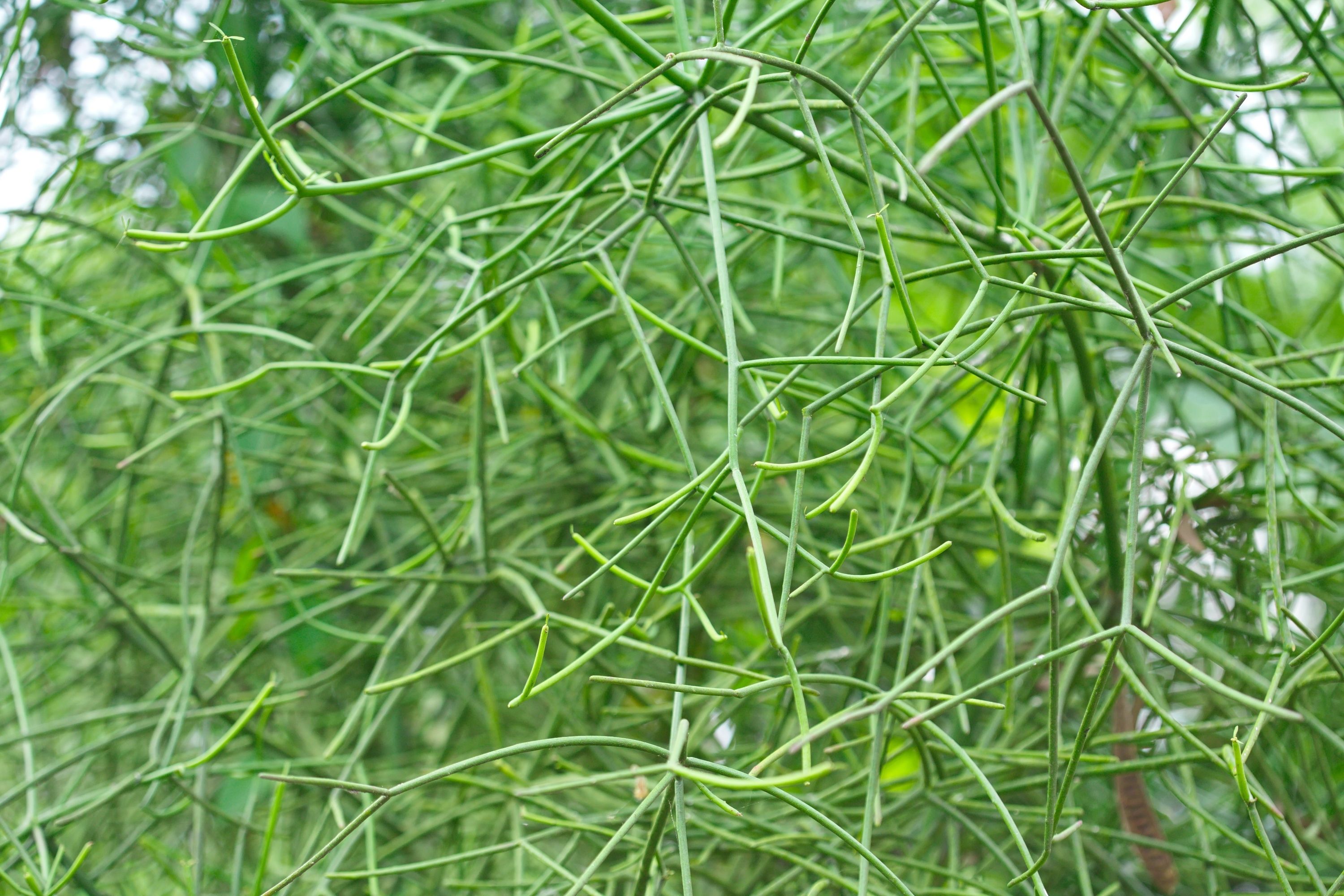Pencil cactus
(Euphorbia tirucalli)

Description
Euphorbia tirucalli, also known as the "Pencil Cactus," is a succulent plant that belongs to the Euphorbia genus. This plant is native to Africa, Madagascar, and parts of India, and it is widely grown for its unique appearance and ornamental value. Euphorbia tirucalli is commonly grown as a houseplant, but it can also be found in gardens, parks, and landscapes. In this article, we will explore the various aspects of Euphorbia tirucalli, including its physical characteristics, growing requirements, medicinal uses, and potential hazards. Physical Characteristics: Euphorbia tirucalli is a tall and slender succulent plant that can grow up to 30 feet in height. It has green, cylindrical stems that resemble pencils, hence its common name, "Pencil Cactus." The stems are typically around 1 inch in diameter and are covered in small, dark green leaves that are inconspicuous and fall off quickly. The plant's leaves are not its primary photosynthetic organ, and it relies on its stems for this function. Euphorbia tirucalli produces small, yellow-green flowers that are insignificant in appearance and bloom in the winter months. Growing Requirements: Euphorbia tirucalli is a low-maintenance plant that is easy to grow, making it an ideal choice for both novice and experienced gardeners. This plant thrives in warm, dry climates and can tolerate a wide range of soil conditions, from sandy to loamy. It prefers well-draining soil and can suffer from root rot if left in waterlogged soil. The plant needs full sunlight to thrive and can be grown in both indoor and outdoor environments. Propagation: Euphorbia tirucalli can be propagated from stem cuttings, which should be taken during the plant's active growing season. To propagate, cut a 6 to 8-inch stem from the plant using a sharp, sterile knife. Allow the cuttings to dry for a few days before planting them in well-draining soil. Keep the soil slightly moist and place the cuttings in a bright, sunny location. The cuttings will root within a few weeks and will begin to grow new leaves and stems. Medicinal Uses: Euphorbia tirucalli has been used in traditional medicine for centuries to treat a range of ailments. The plant's latex, which is a milky sap that is exuded when the plant is injured, contains several bioactive compounds that have been shown to have medicinal properties. These compounds include triterpenoids, diterpenoids, and phorbol esters, which have been found to possess anti-inflammatory, analgesic, and antitumor activities. The latex of Euphorbia tirucalli has been used topically to treat skin conditions such as warts, corns, and calluses. It has also been used to treat burns, cuts, and insect bites. The plant's latex has been used internally to treat a range of conditions, including malaria, dysentery, and cancer. However, caution should be exercised when using this plant internally, as its latex can be toxic and cause severe gastrointestinal symptoms. Potential Hazards: Euphorbia tirucalli is a potentially toxic plant that can cause skin irritation and gastrointestinal symptoms if ingested. The plant's latex contains toxic compounds, including phorbol esters, which can cause severe irritation and inflammation of the skin and mucous membranes. The latex can also cause eye irritation, and it is important to wear gloves and eye protection when handling this plant.
Taxonomic tree:







